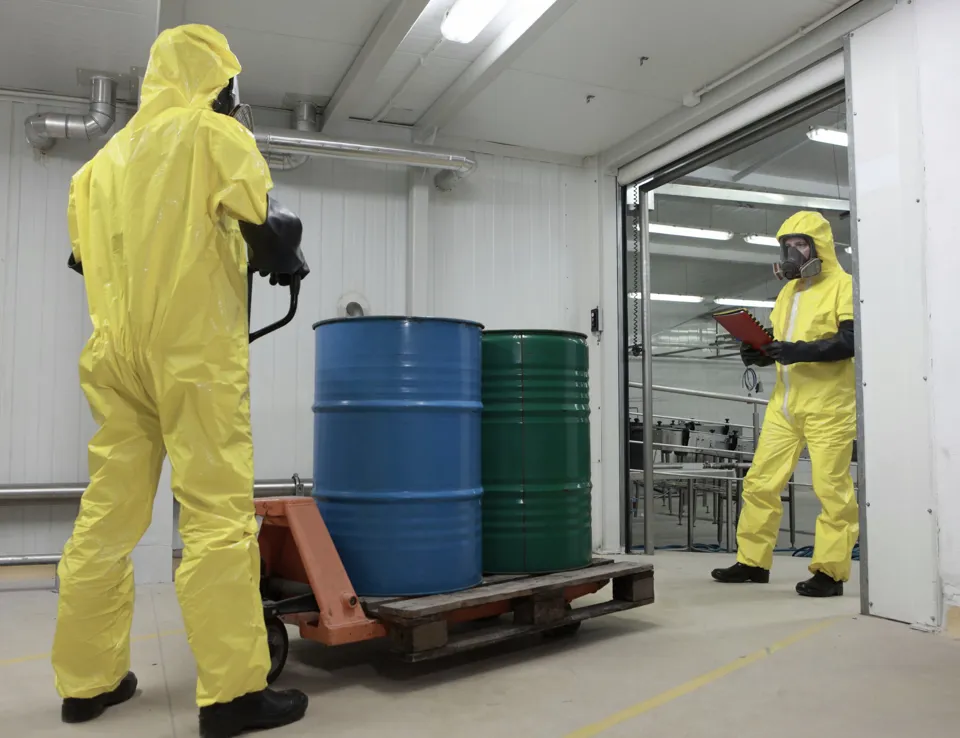
Act now - Update SDS to maintain US compliance
16 Jul 2024
The update to the United States Occupational Safety and Health Administration’s (OSHA) Hazard Communication Standard (HCS) was published on May 20th 2024 and comes into effect on July 19th 2024. While the update requires changes to the information stored on safety data sheets, among other things, it also presents an opportunity for organisations to review their chemical emergency response solution.
Safety data sheets (SDS) store vital information and communicate potential chemical hazards to the supply chain, end users and other stakeholders with the aim of minimising risks to people, the environment, assets, and reputation. Failure to provide sufficient information on SDS can also cause delays in accessing markets, impact supply chains, and increase costs. Companies can also lose business from poor quality SDS, as customers opt for companies with complete and up-to-date documentation from the start, demonstrating a high level of attention to detail, reliability, and responsibility.
While the updates to the standard come with a minimum 18-month transition period, chemical organisations should consider starting to update their SDS as soon as possible to enable a thorough review of all details.
Emergency response contact details are not only a regulatory requirement for transporting goods, but they are a crucial component of safety and risk management processes. Used as an early source of information when dealing with chemical spills, releases, and incidents, emergency response contacts must be available 24-hours a day, as they are used to access further support where chemicals are involved in incidents. As such, there are a few factors that should be considered when reviewing emergency response solutions:
- Regulatory compliance - Ensuring the solution provides a compliant and responsive service in all the countries the organisation trades in is essential, and may require local languages and local contact numbers. Understanding the expectations of customers, distributers, employees and other users of the service is a key pillar of corporate responsibility including the Responsible Care® framework, product stewardship and broader sustainability commitments.
- Expertise and resources – A solution with a high level of chemical and emergency response experience and knowledge will ensure the solution is capable of providing the necessary support beyond conveying information from SDS, which are often readily available. Finding a service which is able to provide additional insight to chemical behaviours and advice on how to resolve any incident will satisfy the expectations of those reliant on the service.
- Global Coverage – International operations require a solution providing global coverage, that not only understands the regulatory requirements in each country but is capable of meeting the requirements.
- Response Time – In an emergency, every second counts. A provider with a faster response time could significantly mitigate damage and health risks.
- Cost-Effective Solution – Companies might seek more cost-effective solution without diminishing the quality or coverage provided by the service.
- Technological Advancements – A provider that invests in robust systems and the latest technology for emergency response and communication may offer better services now and going forward.
- Training and Support – Providers that offer comprehensive emergency response training and ongoing support can help organisations to further mitigate risk and minimise potential costs from avoided incidents.
- Reputation and Reliability – A strong track record and proven reliability in handling past emergencies demonstrates a potential supplier’s capabilities when dealing with an incident.
- Customer Service – Excellent customer service and clear communication can be a deciding factor, especially during stressful emergency situations.
- Integrated Services – Companies might look for providers that offer a range of services, and bring other elements of chemical hazard management, regulatory compliance and safety under one provider.
In summary, a chemical company may change their emergency response provider to enhance safety, ensure compliance, improve response times, and potentially reduce costs, all while maintaining or improving the quality of emergency services. It’s a decision that can have significant implications for the company’s operations, safety, and reputation.
Reviewing current emergency response provisions while reviewing all SDS information enables organisations to ensure compliance, improve incident response handling, and potentially reduce costs – all while maintaining or improving the quality of the service.
Solutions for your business
Having supported the chemical sector since 1973, Ricardo’s experienced team are capable of supporting all organisations with every aspect of SDS management – from authoring to translation, regionalisation to compliance checks – and also provides a market leading telephone emergency response service, not only because of the high-quality advice provided to callers, but because of the wider support offered as part of our emergency response service, such as our detailed call reporting.
Learn more >




 Follow Ricardo Chemical Solutions for regular updates
Follow Ricardo Chemical Solutions for regular updates




